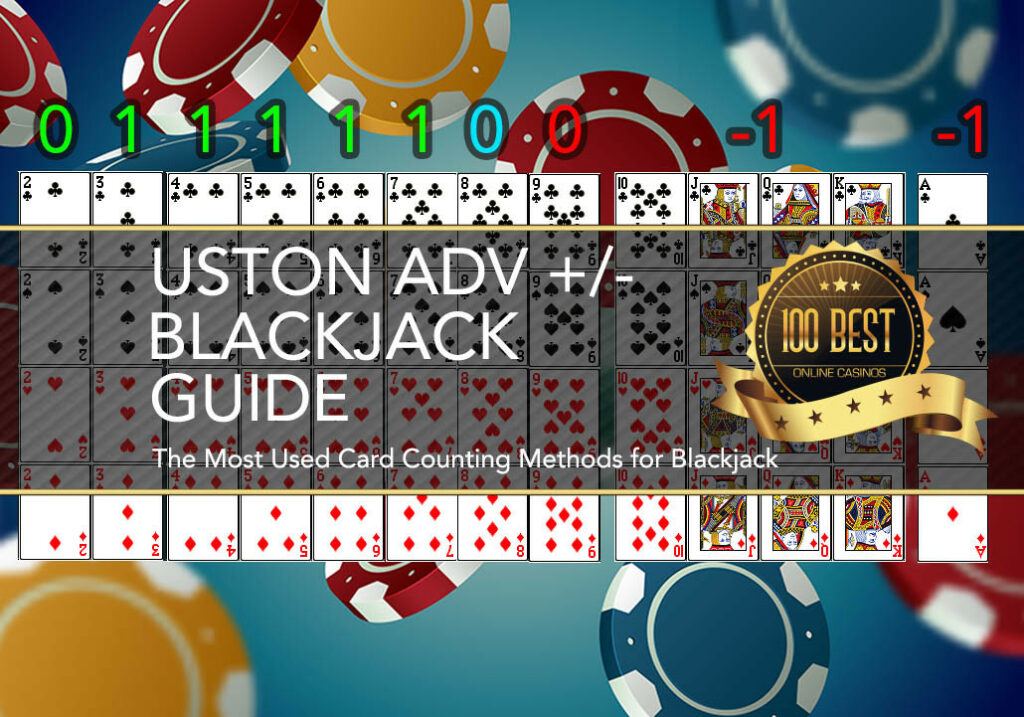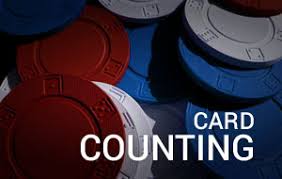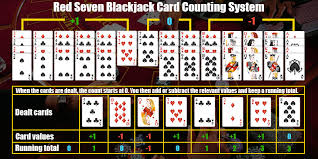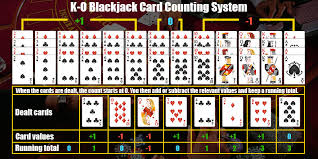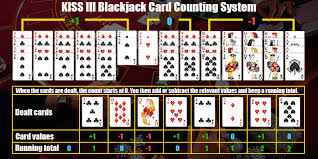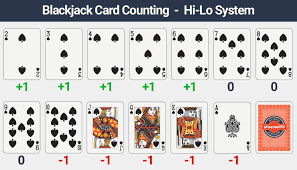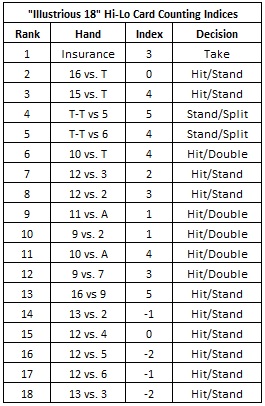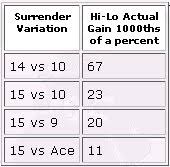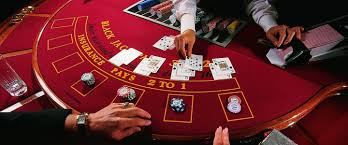
The Mentor card counting system is another one developed by Fred Renzey and is introduced in his book the Blackjack Bluebook II.
This is a multi-level system and also considered a level two system because of the wider range of indices.
What makes this system harder is that the indexes range from -2 to +2, so there is more memorizing to be done.
Another difficult part to this system is that it uses a “true count” and not just the running count. This means some additional math, fortunately not too difficult though.
What makes it easier to learn is that it is a balanced system, meaning if you were to count down a deck, you would start with 0 and end with 0. That makes it easier to practice because you know if you’re not at 0 when you run out of cards, you counted something wrong.
How it Works
Each card in the deck is assigned a value of -2, -1, 0, +1, or +2. The chart of values is:
| 2 | 3 | 4 | 5 | 6 | 7 | 8 | 9 | 10 | J | Q | K | A |
| +1 | +2 | +2 | +2 | +2 | +1 | 0 | -1 | -2 | -2 | -2 | -2 | -1 |
A running count is kept as the cards are dealt. The count does start at 0. You will need to convert the running count to the true count, which means, for this system, dividing the running count by the estimate of remaining double decks in play. Note that the true count is figured out based on the number of “double” decks remaining. That is different than other systems where the conversion is based on remaining single decks.
As you keep track of your running count, before you decide on your bet, you convert that running count to the true count.
When the next hand is dealt, you add the new card values to the previous running count, not the true count. But once again, when you’re ready to bet, convert the running count to the true count and bet based on the true count.
Your running count will revert back to zero once the cards are shuffled.
SIZING YOUR BETS
If the true count is positive, you’ll want to increase your bet, if it’s negative, you want to keep your bet at the table minimum.
Most players like using the true count as a multiplier with this system. For example, if the true count is +4, your bet should be 4 times the table minimum. Conversely, if the true count is +1 or less, your bet should remain the table minimum.
Ideally, sizing your bet should be done by whatever method fits your individual playing style. Use of a bet sizing system, will keep your wins and losses to maximums and minimums, while misdirecting the fact that you’re counting cards.
FINAL THOUGHTS
With the Mentor card counting system being a level two system, with a betting correlation of 97%, it is efficient and understandably very effective with medium sized shoe games.
It is not an easy system for a beginner, but an advanced player could be quite successful using this system.



